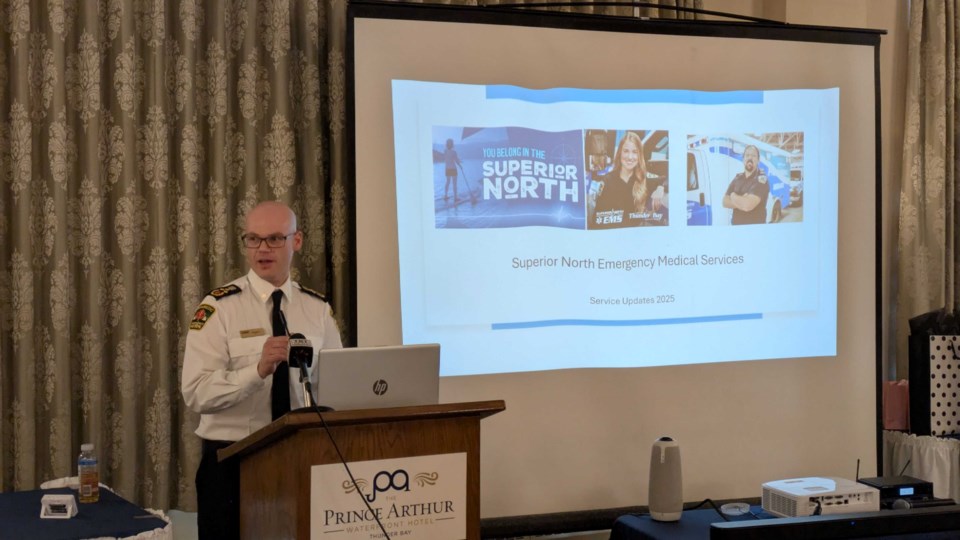THUNDER BAY — The head of the paramedic service that operates in Thunder Bay and a large portion of the region says his organization is looking to hire more staff.
Shane Muir, the chief of Superior North EMS, said that the service will be putting out 26 offers for paramedic employment across the district. Muir made the announcement in a presentation on Friday to the Thunder Bay District Municipal League.
The offers come with a $4,000 incentive for a one-year commitment and an additional $4,000 if they sign on for another year, he told attendees. They are specifically for positions outside the city.
“With that incentive, we're hoping to lock in as many paramedics as we possibly can for our region and we're really excited to see them start working,” Muir said.
“We have some strategic priorities coming into the next year, and that's really going be top of mind is workforce development,” he added. “We need more paramedics, we need good paramedics.”
“We need people able to be able to respond to these calls and provide that care.”
Superior North EMS serves 13 municipalities and 12 First Nations, Muir said in his presentation. About 50 per cent of its resources are dedicated to the city of Thunder Bay and roughly the other half are spread among the rest of its coverage area.
It serves communities from Upsala and eastwardly as far as Manitouwadge; Muir said that it covers more than 103,000 square kilometres.
Muir’s presentation covered a wide range of topics, including a look at the service’s organizational structure, a list of initiatives they’re prioritizing, a rundown of response times, call breakdowns, and more.
The district outside of Thunder Bay saw more than 5,500 calls for service in 2024, he said, with facility transfers being the most common reason. The city itself saw a 20 per cent drop in calls last year, he added, noting that it’s the first time they’ve seen a decrease, although overall, they’re still very busy.
“There is no real difference in day of the week or time of the month or anything else,” Muir said. “EMS is just busy all the time, and people have emergencies at any given time, at any point of the day.”
Adding to that, he said, is that 25 per cent of their call volume is refusals of service and “no complaints” calls. “These are not emergencies, but yet they are a huge driver of what we're doing out there and our utilization,” he said in his presentation. “This is why we need those proactive community supports and other methods of doing calls.”
“We just no longer have the capacity to maintain this type of volume.”
Muir cited offload delays as an area where he said the service is making progress, noting that they’ve had an over-1,000-hour reduction in that area in the past year.
“That is because of the way we're doing business now,” he said. “We've changed our dispatch system, we've created a modernized dispatch system that is based on patient acuity.”
He also presented a slide that broke down what the cost per call is in each municipality. Population density factored heavily into the calculation, meaning Thunder Bay came in at the cheapest at $536. At the other end of the spectrum was Upsala at $10,793 per call.
“Then you have your less dense areas that are going to drive that call up by thousands and thousands of dollars because we have to maintain that same million-dollar service,” Muir said.
-With files from Clint Fleury
